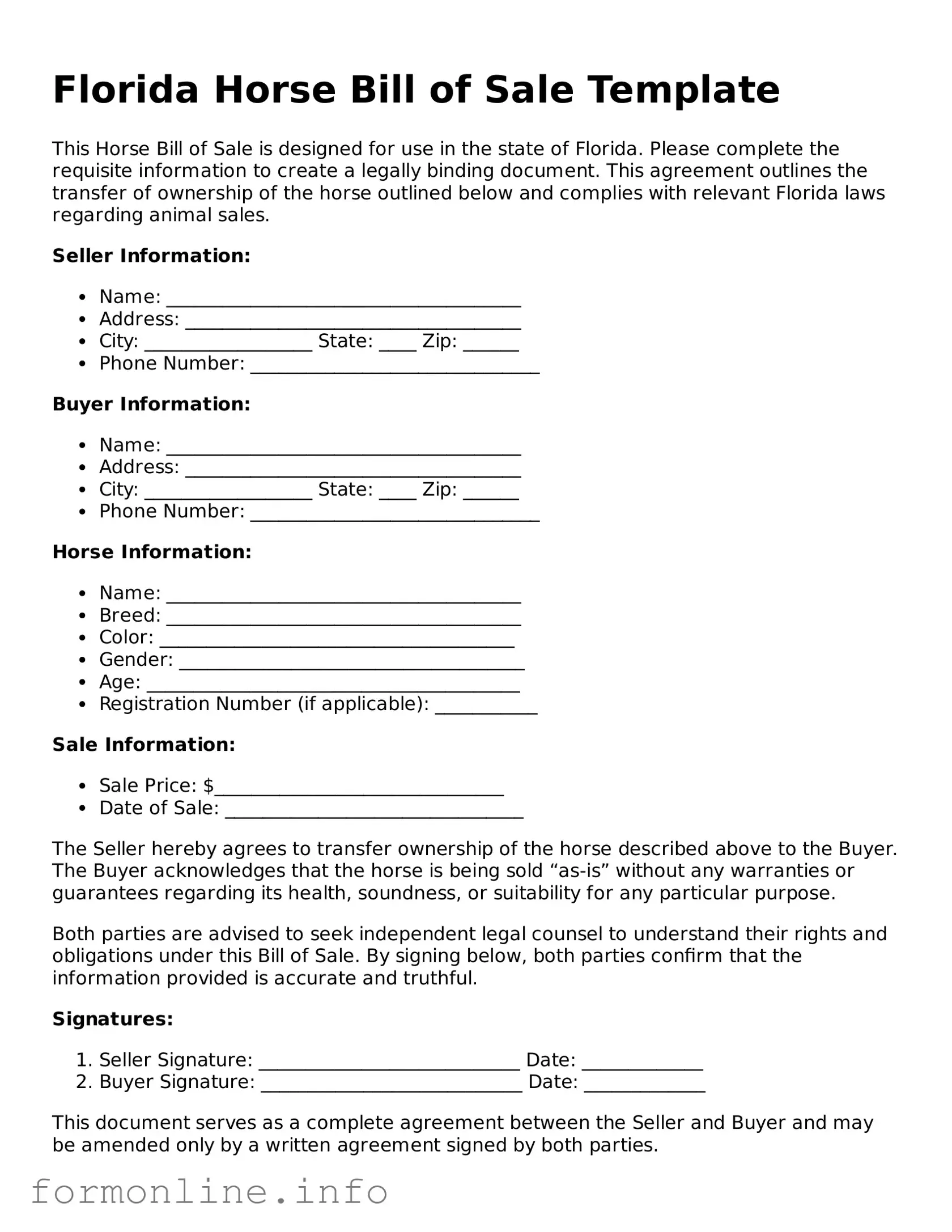Florida Horse Bill of Sale Template
This Horse Bill of Sale is designed for use in the state of Florida. Please complete the requisite information to create a legally binding document. This agreement outlines the transfer of ownership of the horse outlined below and complies with relevant Florida laws regarding animal sales.
Seller Information:
- Name: ______________________________________
- Address: ____________________________________
- City: __________________ State: ____ Zip: ______
- Phone Number: _______________________________
Buyer Information:
- Name: ______________________________________
- Address: ____________________________________
- City: __________________ State: ____ Zip: ______
- Phone Number: _______________________________
Horse Information:
- Name: ______________________________________
- Breed: ______________________________________
- Color: ______________________________________
- Gender: _____________________________________
- Age: ________________________________________
- Registration Number (if applicable): ___________
Sale Information:
- Sale Price: $_______________________________
- Date of Sale: ________________________________
The Seller hereby agrees to transfer ownership of the horse described above to the Buyer. The Buyer acknowledges that the horse is being sold “as-is” without any warranties or guarantees regarding its health, soundness, or suitability for any particular purpose.
Both parties are advised to seek independent legal counsel to understand their rights and obligations under this Bill of Sale. By signing below, both parties confirm that the information provided is accurate and truthful.
Signatures:
- Seller Signature: ____________________________ Date: _____________
- Buyer Signature: ____________________________ Date: _____________
This document serves as a complete agreement between the Seller and Buyer and may be amended only by a written agreement signed by both parties.
